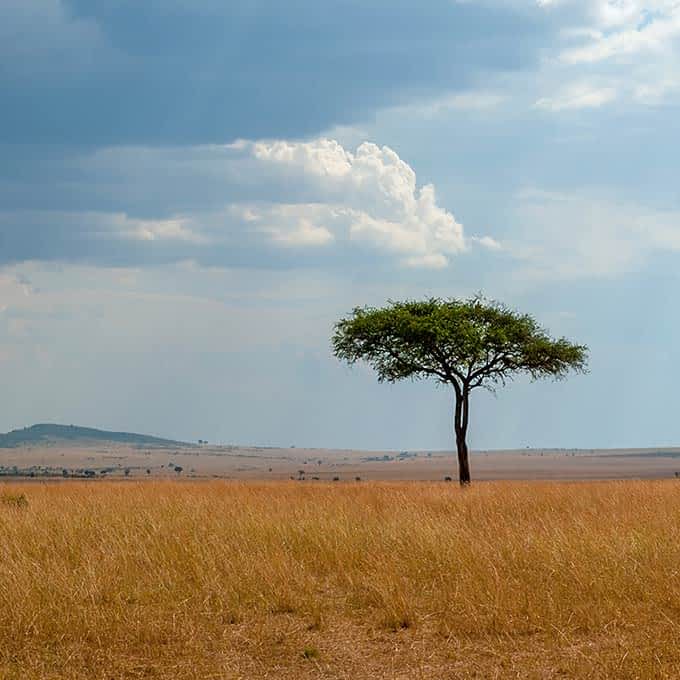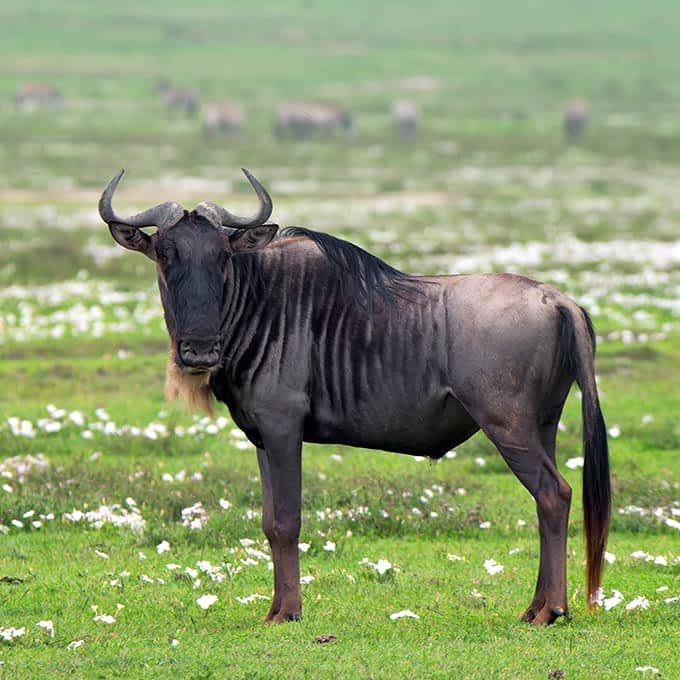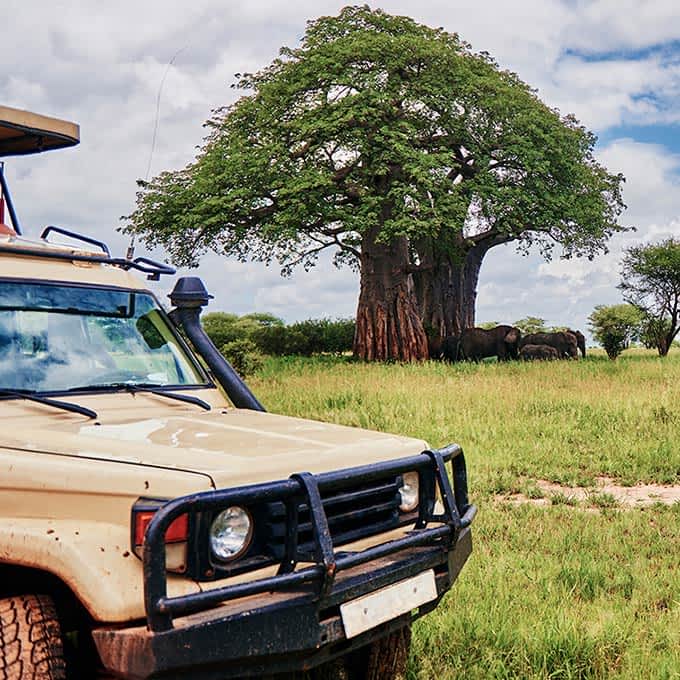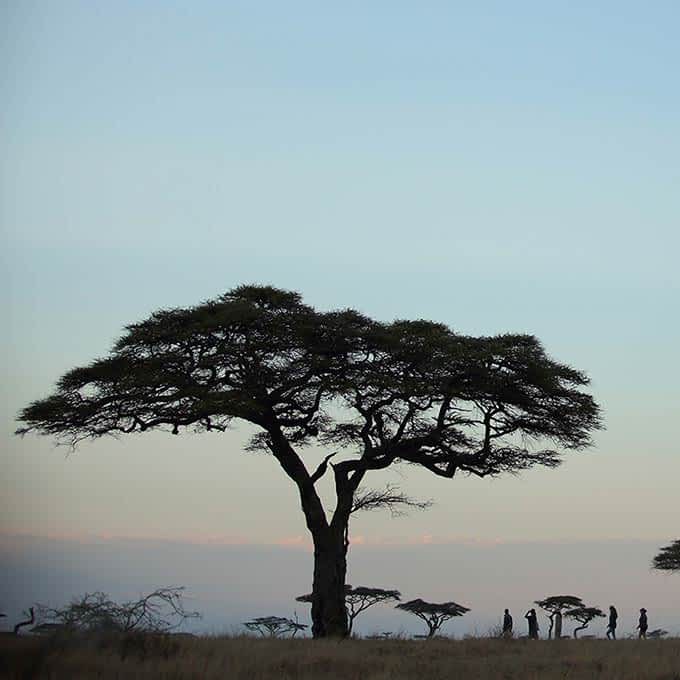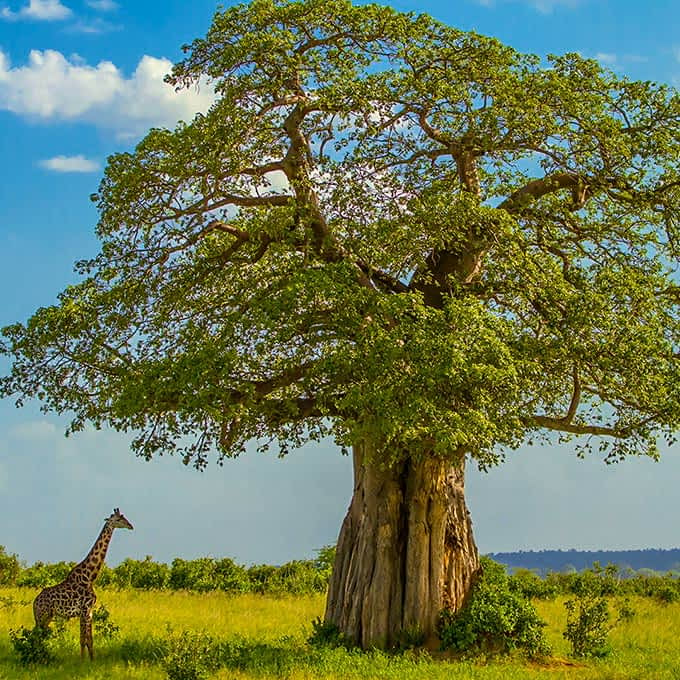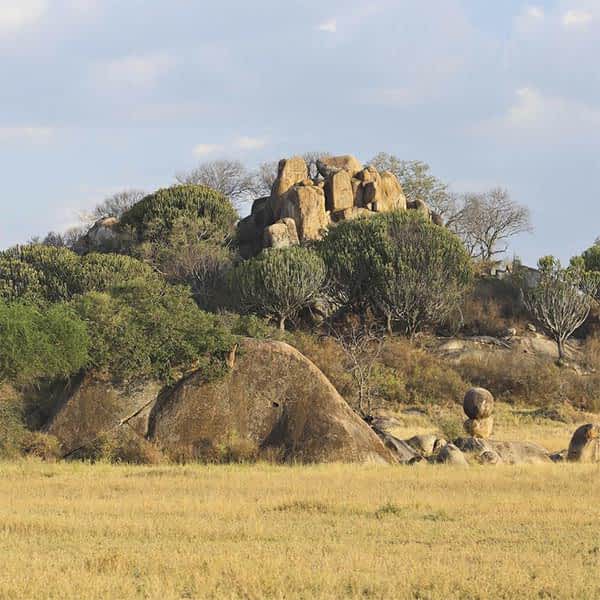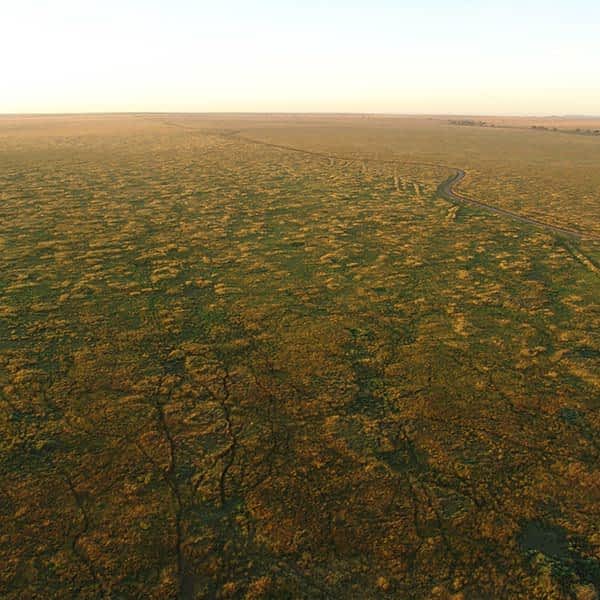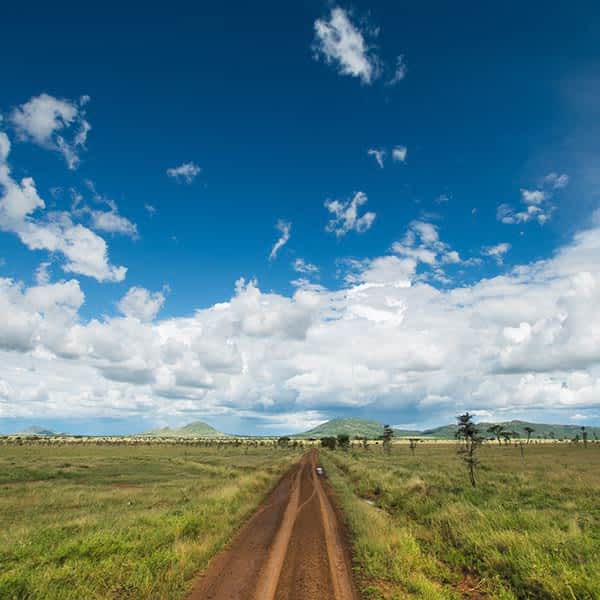Trees
Sausage Tree (Kigelia africana)
This large tree is only found sparsely in the Serengeti, usually along the dry river banks. It produces remarkable long (up to 50 centimeters), succulent, but poisonous fruits that drop from the tree and release seeds as the pulp rots: The fruit stalks can be seen for months after the fruit has dropped and is often mistaken for a leopard's tail.
Fig Trees (Ficus sp.)
There are several species of fig trees in Serengeti National Park. The distinctive grey smooth bark with large buttressing intertwined roots and saucer-sized dark green leaves make them easy to identify. Figs are a common tree along the moist banks of rivers or growing in the rocky clefts of kopjes.
Wild Date Palm (Phoenix reclinata)
Palms are monocotyledons meaning that the veins in their leaves unbranched and parallel, and are thus relatives of lilies, bananas, grasses, and orchids. The wild date palm is the most common of palm trees in the Serengeti, and can be found along rivers and in swamps. Although fruits of the wild date palm are edible, they taste horrible. The sugary sap can be made into palm wine. The tree offers lots of shade favoured by resting lions.
Commiphora (Commiphora africana)
We can easily distinguish Commiphoras from Vachellia by their peeling, papery blue/yellowish bark and small roundish leaves. These trees occur throughout the Serengeti, but are dominant in the eastern section of the park. Local medicine makes use of the roots, bark and berries for a multitude of treatments, including rashes, liver problems, and stomach complaints. Of the Commiphora species, Commiphora africana (or African myrrh) is the most common.
Yellow Fever Tree (Vachellia xanthophloea)
The yellow fever tree is a common sight in wet areas along rivers, or near swamps and floodplains. A tall graceful tree with large white thorns, wide stretching branches and yellow bark makes it distinctive. You really can’t miss it. Early settlers noticed that malaria was more common near standing water, but blamed their fevers on the yellow trees growing in the vicinity rather than mosquitoes; hence the name ‘Yellow Fever Tree’.
Umbrella Tree (Vachellia tortilis)
This tree represents Africa, its iconic shape breaking the flat landscape of the plains. Vachellia tortilis arches dramatically over the savannah throughout Serengeti National Park with prominent white thorns, dark bark and its distinguishable flat-top. The seedlings of this tree are favoured by giraffes and elephants. Seedlings of the umbrella tree cannot survive bush fires, so only twice in the last 125 years have umbrella trees been able to establish en masse. Most of the umbrella trees in Serengeti are 125 or 45 years old.
Whistling Thorn (Vachellia drepanolobium)
An odd-looking tree that has hard, hollow spheres at the base of its thorns, filled with biting ants. The tree encourages ants by providing shelter and food in ‘extrafloral nectaries’ (special flower-like structures) in exchange for protection. The name whistling thorn is derived from the whistling sounds made by the ant’s entrance holes into the hollow galls. These short trees grow in abundance whenever the soil becomes seasonally water saturated.
Grasses
Red Oat Grass (Themeda triandra)
Turning a light pinkish-red color as it dries, red out grass (kangaroo grass in Australia, or rooigras in Afrikaans) is one of the dominant grass species in woodlands and the the long-grass plains of Serengeti National Park. On the plains red out grass can grow so thick that it looks like a field of wheat, with its flat fan-like seeds waving in the wind. Wildebeest eat red oat grass, though it is consumed after more palatable grasses are exhausted.
Finger Grass (Digitaria macroblephora)
This is probably the most common grass in the Serengeti. Its nutritious leaves are preferred by many grazers, and on closer inspection it is challenging to find an individual that has not had a bite taken off. Like the name suggest, the seed heads look like thin fingers pointing up to the sky.
Pan Dropseed (Sporobolus ioclados)
This Sporobolus species, along with finger grass, is one of the two dominant species on the short-grass plains. Both species also grow in a dwarf form, which makes it difficult to distinguish between the two. The seed head of pan dropseed is shaped like a Christmas tree with the seeds dangling below the fronds like miniature ornaments which makes it distinctive from the other grasses.
Invasive plant species
Invasive plants, not endemic to the Serengeti, form a problem as they push away and replace the area’s original vegetation. The Mexican Marigold was introduced to the area with a shipment of wheat seeds: it is a quick growing weed and is making areas unfarmable, and is competing with crops and native plants. Other invasive species, such as Prickly Pear (Opuntia sp.), and Custard Oil (Rhoicissus sp.) also pose a serious threat. The threat of non-endemic species changing the vegetation of Serengeti National Park, and as a result wildlife behaviour, appears both real and immediate. Mexican marigold, prickly pear, and custard oil can be found inside the park, especially on the roadsides where the seeds carried by vehicle fires quickly take root.
Further reading

